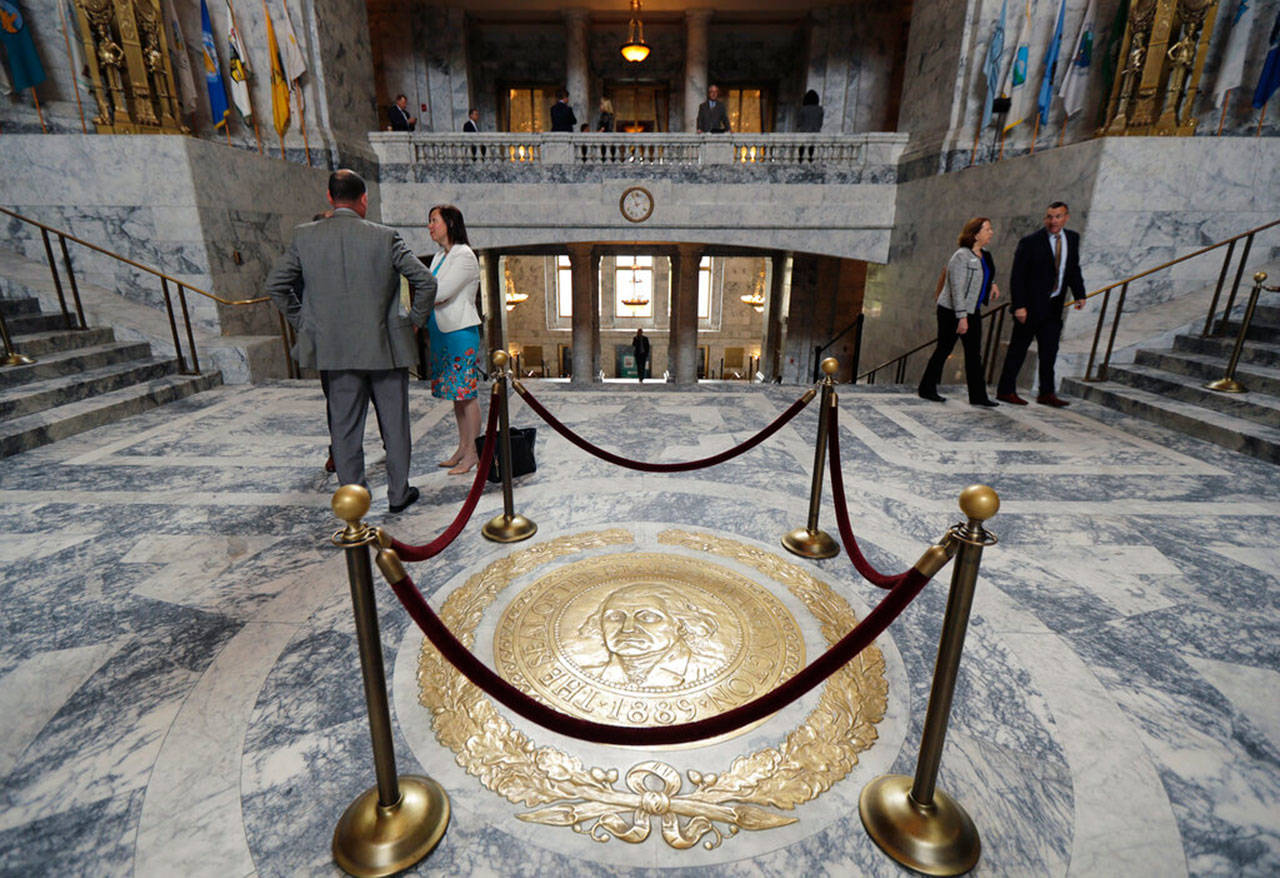By The Herald Editorial Board
The state’s two-year capital budget has an advantage over the operating budget, its bigger sibling: it funds the physical things — school buildings, highways, parks and more — that are the most evident examples of “your tax dollars at work.”
OK, a lot of that is financed by bonds, so it’s “your and your kids’ tax dollars at work,” but you get the idea.
Generally, there’s little disagreement over the need for spending in what’s also referred to as the construction budget.
In fact, the Washington Legislature has only failed once in recent memory to pass a capital budget; two years ago Senate Republicans refused to vote on the capital budget until a deal could be reached on a fix to a state Supreme Court decision on water rights. Instead of forcing the issue, however, Republicans lost control of the Senate the next year in a special election and Democrats — who have had control of both chambers since — passed their own legislation on the issue and adopted the capital budget.
The delay in spending did, however, demonstrate the importance of the capital budget in providing facilities as well as construction jobs that boost local economies. Among the projects threatened with delays in Snohomish County were a science, engineering and technology building at Edmonds Community College; new and renovated schools for Lake Stevens, Lynnwood, Mountlake Terraces and Edmonds; and funding for supportive housing for the recently completed Cocoon House Hub and Housing Hope’s HopeWorks Station II, which is scheduled to open later this year.
Similar projects are outlined in both House and Senate versions of the capital budget, which may be adopted as early as today as the Legislature trundles along to complete the regular session as scheduled by Sunday.
While there’s general agreement on the broader priorities for the capital budget — schools, transportation, the environment, parks and facilities for reforms to the state’s delivery of mental health services — House and Senate will have to reconcile differences in allocations for specific projects and overall spending; $4.6 billion by the House and $5.26 billion by the Senate.
In general, the Senate Democrats’ spending list makes greater investments than the House in natural resources, higher education and governmental operations, while the House budget spends slightly more than the Senate on human services. But each makes significant investments, including:
About $1 billion for K-12 school construction, and near that amount for higher education construction;
Construction of behavioral health facilities and a teaching hospital at the University of Washington that will begin a transition to community-based mental health treatment, along with building a new state hospital;
Grants for additional supportive housing programs and support of affordable housing projects; and
Environmental programs for toxics cleanup, water quality and stormwater projects, as well as projects for salmon, orca and other habitat restoration, conservation and recreation and wildfire prevention.
While lawmakers decide what will and won’t make the cut, we’ll take a last-minute opportunity to lobby again for two programs: funding for the Washington Wildlife and Recreation Program and Floodplains by Design.
The WWRP uses state grant funding to leverage financial matches from local government and groups for parks and public lands projects. This year’s proposal identified $130 million worth of projects across the state, including projects in Bothell, Meadowdale, Lynnwood and Edmonds. The governor’s budget suggested funding of $115 million, while the House proposed $80 million and the Senate $90 million.
While the House proposal represents a marked increase over past budgets that allocated less — $55 million in 2015, $65 million in 2013 and $42 million in 2011 — the Senate recommendation will provide funding for more projects and ensure that local funding for those projects doesn’t sit idle.
Likewise, lawmakers should consider the investments to be made in prevention and mitigation of the threats from flooding as well as habitat improvement through Floodplains by Design.
The Floodplains by Design effort — a public-private partnership established by the state Legislature — has brought together public and private interests to discuss and plan solutions that consider the river as a whole. Since its start in 2013, the program has invested $115 million in state funds, joined by $107 million from other sources, in projects in 15 counties in the state, including Snohomish County, providing greater flood protection, levees, removal of homes from high-risk floodplains, restoration of salmon habitat, reconnected flood plains, more pubic trails and access, protection of farmland and improved water quality for shellfish beds.
Starting with a list of $325 million in projects, project participants prepared a reasonable list of projects totaling $70 million. The governor’s budget allocated $42 million; House and Senate about $35 million each. At those levels of funding only one of two projects in Snohomish County would see funding: projects along the Skykomish River between Sultan and Monroe. Work planned for the Stillaguamish River would go unfunded without an allocation of at least $50.4 million.
We endorse the priorities that lawmakers have identified and encourage the highest level of funding lawmakers can achieve within the revenue made available, understanding there’s work yet on tax proposals as well. But we’ll encourage one last look at worthy projects for parks, public lands and our river channels that add to quality of life and protection of lives, property and environment.
Talk to us
> Give us your news tips.
> Send us a letter to the editor.
> More Herald contact information.

























